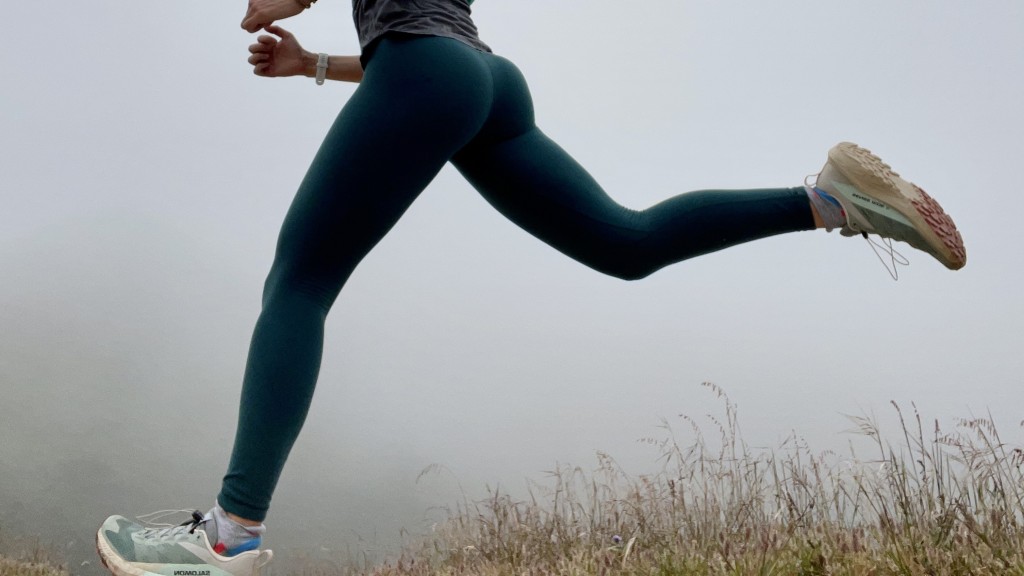Where We Test
A good trail running shoe is characterized by its performance on the dirt. As a result, we've tested all contenders over a wide range of surfaces and environments over the years. We've run thousands of miles over varied terrain in South America, Canada, Europe, and the United States. We've visited the summits of mountains, trained on the beach, run through the valleys, and sweated it out in the desert. We have entered races in these shoes and executed our own unsanctioned and unsupported endeavors.
We evaluate each shoe on its ability to perform across different categories. We typically carry our phones with us and frantically let Siri transcribe our thoughts as we narrate them. We also ensure that each model is tested fairly across a wide range of foot shapes and preferences by giving local runners and friends the shoes to test on the trails. We also do our research, cross-checking hundreds of other online reviews to ensure we aren't missing anything and to identify potential issues to look for. We condense all of this research and hands-on experience into a package of manageable information to help you make the best decision for yourself and your feet.
Testing Metrics
Foot Protection
In this metric, we perform a variety of objective tests. While in the field, we observe which shoe provides the best protection underfoot. We notice if any trail debris penetrates the mesh uppers and which shoe offers the best water resistance while crossing streams. As we run, we actively try to get sand, water, and other particles into our shoes. We compare the protection of the uppers, tongue, and outsole. We also look at responsiveness, cushioning, and other protective elements, such as the hardness of the toe cap and how the fit affects protection. We kick rocks with the toe bumpers, intentionally run across sharp rocks, and compare the underfoot sensations as we go. We submerge our feet in bodies of water and time how long it takes for our socks to feel saturated. This time around, we executed a lot of beach runs in Morro Bay, CA, and found a shallow, sandy inlet that is perfect for testing the elemental protection of each shoe. We returned to the same spot again and again for continuity and to ensure a fair trial for all shoes.
Traction
We have learned that we cannot judge a shoe based on the appearance of its outsole alone. The shape of the lugs and patterning makes a big difference in the grippiness of each shoe. We look at various surfaces in this metric and take notes for each shoe. We tested on surfaces that included zoomy single track, sticky mud, snow, pavement, roots, wet rocks, sand, and plenty of slippery scree. We assess the comparative lug length and type of rubber used in each trail shoe. We also look at the lug shape and placement to determine how the form correlates to its best use. In addition, we note which shoes we subjectively feel safer and less slippery in.
Sensitivity
This test is relatively simple, though, of course, it contains some nuance. The shoe that provides the least protection underfoot from the trail provides the best sensitivity. The more we could feel the trail, the better the sensitivity. As a result, in addition to field tests, we compared the relative stack height to measure each shoe in this metric. Some stacked shoes provided better sensitivity than others, which is something that we were careful to take note of.
Stability
When evaluating stability, we observe which shoes provide the most lateral support and which ones feel downright tippy. We measure the width of each shoe and compare its stack height to create a ratio. We also run over precarious surfaces to see which tip and bend more. In general, shoes with a higher heel-to-toe differential are less stable than others. Zero-drop shoes are often the most stable because they tend to have a wider base of support and allow your heel to ride lower to the ground. Additionally, wider shoes tend to be a bit more stable because they allow your toes to splay, which leads to better muscular engagement through the small muscles of the feet and ankles. Though we mostly assess stability based on the shoe shape, height, and profile, we also use a keen eye to gauge what each shoe encourages your foot to do. Typically, the more a shoe encourages the tiny muscles in your feet and ankles to fire, the higher the rating in this metric.
Comfort and Fit
When looking at comfort, we run with each shoe to see which ones feel most homey for our feet. We look at the cushioning, its responsiveness, and its relative thickness. We also look at the upper and how breathable and comfortable it feels on our toes. We are incredibly sensitive about lace beds and heel collars, and while we acknowledge that not all runners are, we took special care to note which shoes will appeal to people who feel the same way about comfort (i.e., they take it very seriously).
We didn't award any points for fit simply because this is such a subjective category. Instead, we identified which shoes fit best for wide, narrow, and medium feet and where the relative support exists or doesn't exist. Some shoes run smaller than others, and while each tester only purchases shoes in the correct size, some lie outside the lines of what we expect a traditional size to fit like.
Weight
To test weight, we measure every single shoe on the scale to see which is the most lightweight. We also note if the shoes feel trail dynamic or bulky when in use. In some cases, the underfoot cushion can feel heavy, so we note how evenly distributed each shoe's weight feels as we run.








